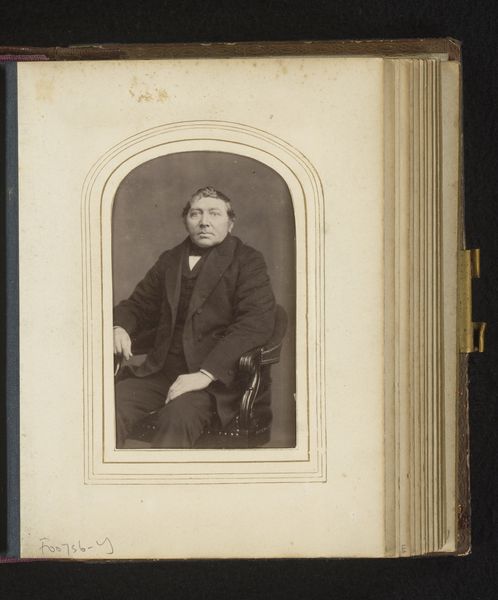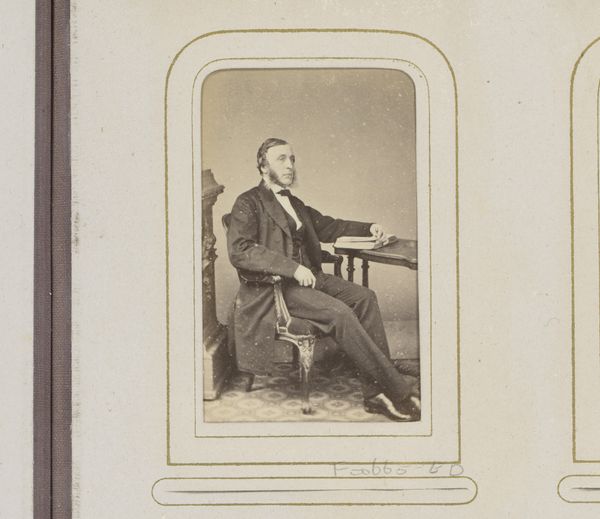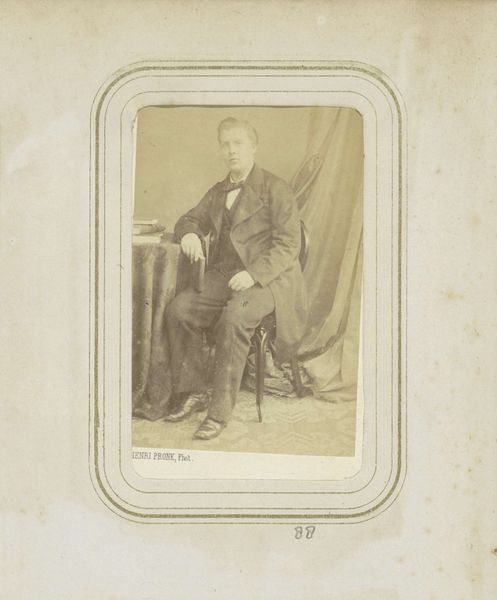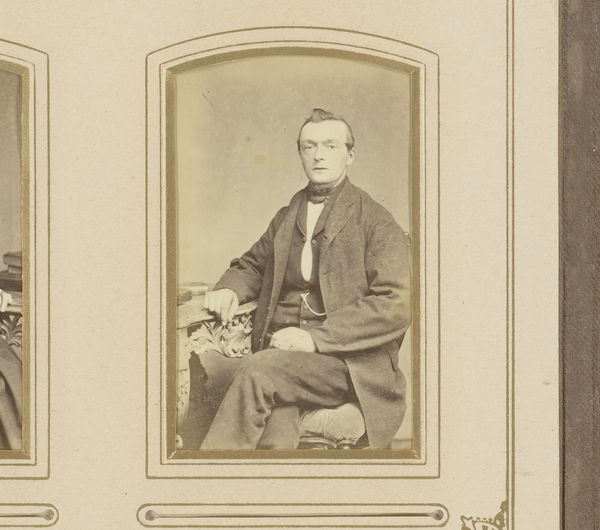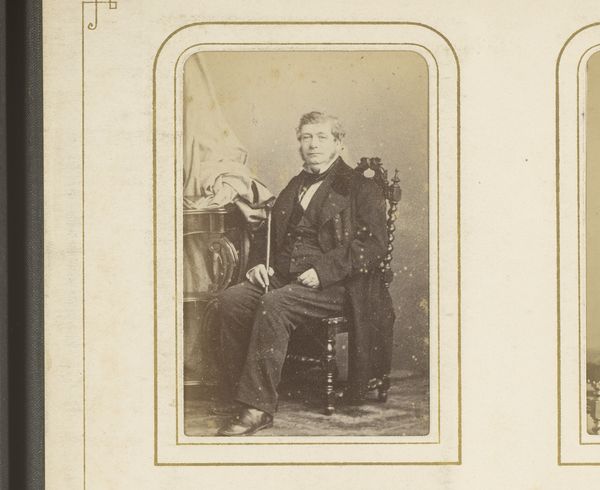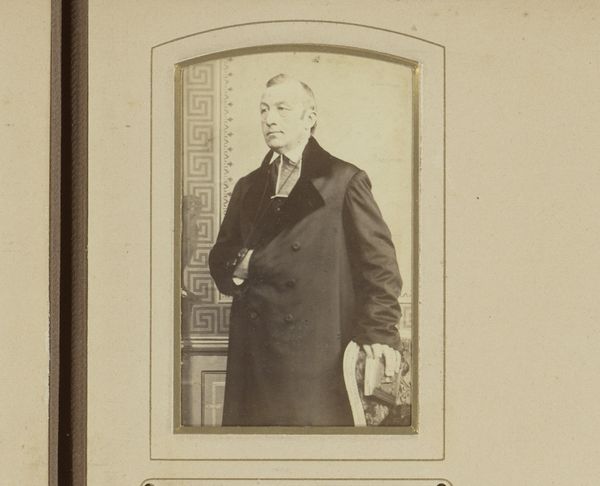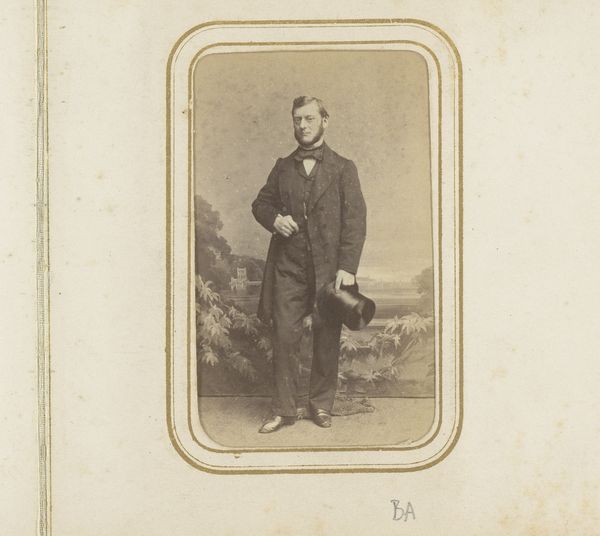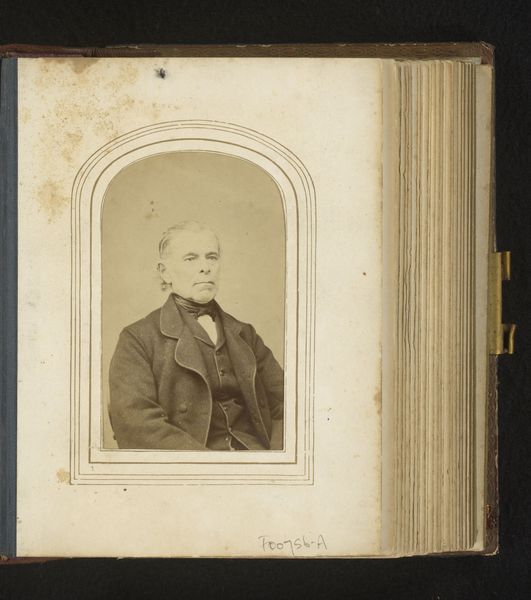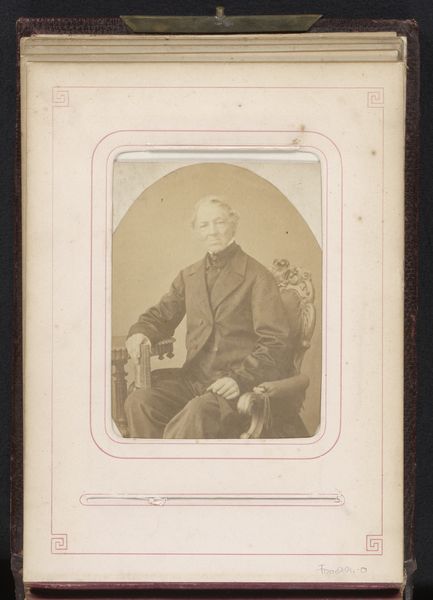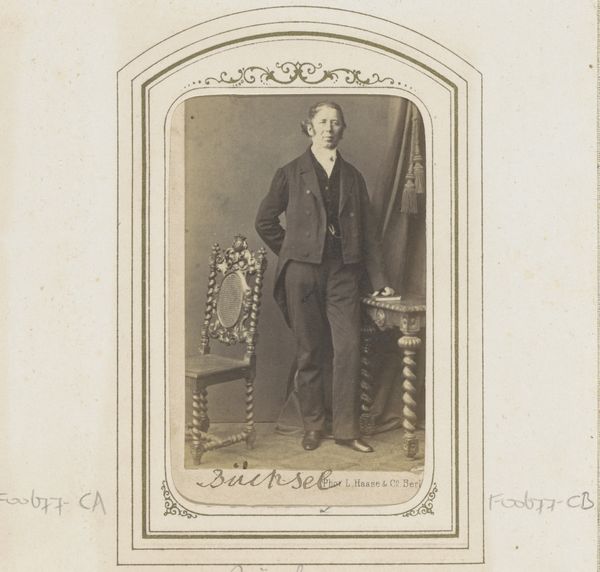
photography, albumen-print
#
portrait
#
aged paper
#
toned paper
#
antique
#
photography
#
albumen-print
Dimensions: height 86 mm, width 53 mm
Copyright: Rijks Museum: Open Domain
Curator: I’m immediately drawn to the quiet intensity of this piece. It’s an albumen print, titled "Portret van een zittende man" which roughly translates to 'Portrait of a seated man'—quite straightforward!— and estimated to have been made sometime between 1866 and 1880 by Von Kolkow & Co. There's something about the aged paper and the sitter’s serious gaze that really captures my imagination. Editor: Yes, the toning gives it an aura of solemnity, doesn't it? Knowing albumen prints were popular at the time, primarily among the middle class, contextualizes his serious composure within that rigid social decorum. I see not just a portrait, but a cultural snapshot of Victorian masculinity and expectations. Curator: I feel it. You can almost feel the weight of expectations in the pose. He’s clearly posed, almost stiff, yet there’s something incredibly vulnerable in his eyes. Perhaps an insight into the hidden anxieties that the patriarchal values forced to supress during those years? I do wonder what was in his mind when the photographer was at work. Editor: Absolutely. The history of photography itself is inherently linked to the history of colonialism and the power of representation. Photography presented the sitter to the masses—an opportunity only available to privileged bourgeois like the man on the chair. Who was he representing when taking a family portrait? And to whom? How many people of color were being subjugated or abused by folks looking like him, while this piece of work was being put together? Curator: You're giving me a lot to ponder about! And how that resonates today, considering the debate in representation in arts nowadays! Maybe this old albumen print its less obsolete as initially seemed. I wonder what it’d be like to travel back in time and share our present perspective with him, if only for a brief moment of reflection. Editor: A sobering thought indeed. Looking at art critically demands that we consider these interconnected histories and interrogate the values, and whose interest are behind their images. Let's leave the visitor with that charge!
Comments
No comments
Be the first to comment and join the conversation on the ultimate creative platform.
